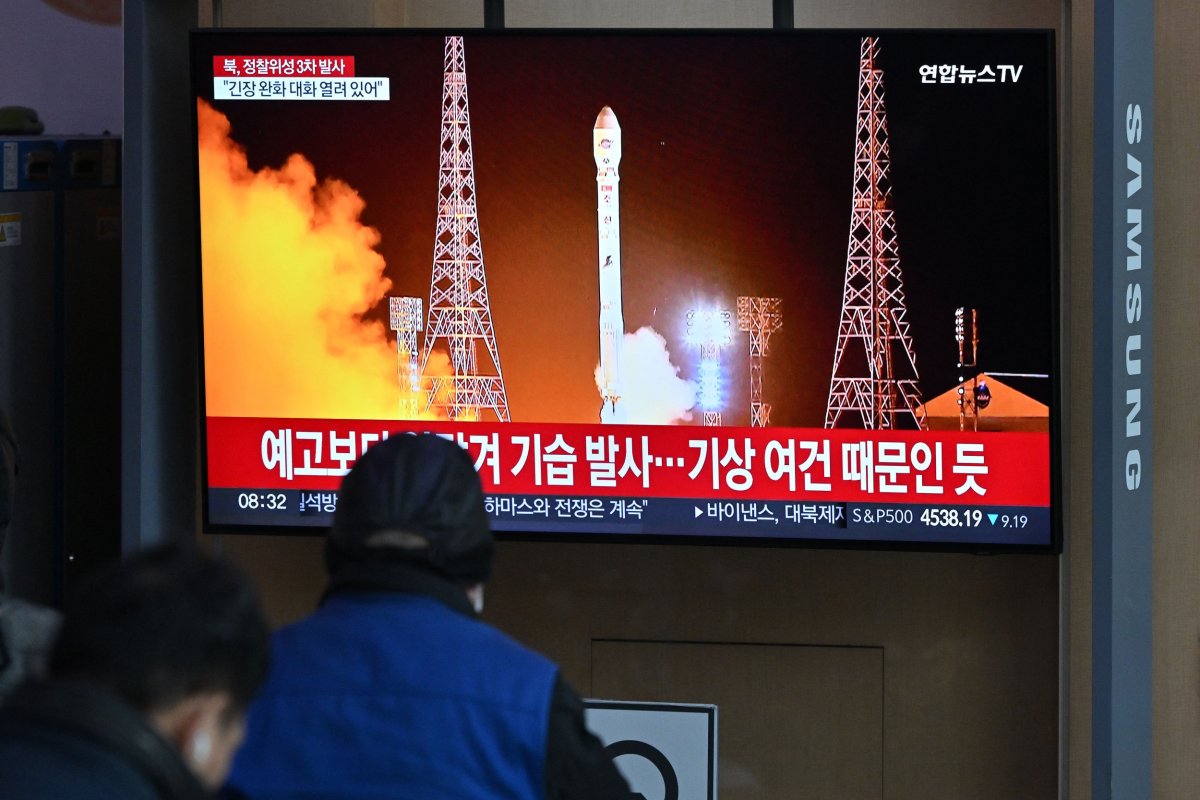South Korea's first homemade surveillance satellite has begun transmitting images of the North, including central Pyongyang, at a time when relations between the two neighbors are at their most acrimonious in decades.
"Pyongyang's central area and vessels at a port are clearly seen," reported South Korea's Yonhap News Agency, quoting an anonymous military source's analysis of the current test imagery.
The satellite was launched from California's Vandenberg Space Force Base aboard a SpaceX Falcon 9 rocket on December 1, less than two weeks after North Korea succeeded on its third attempt in putting its own spy satellite into orbit. Washington and Seoul decried this as a violation of U.N. Security Council resolutions aimed at curbing the North's ballistic missile program.
While avoiding specifying subjects of the surveillance, citing security concerns, the source reportedly said the satellite had captured "good" resolution images of central Pyongyang.
That part of the North Korean capital is home to a number of government complexes including the headquarters of the one-party state's Workers' Party of Korea, and the office of Supreme Leader Kim Jong Un.
The spacecraft was also said to have snapped photos of ships at port.
Yonhap cited other sources as saying the satellite images require significant editing. Higher resolution pictures are expected from next month, and the project is set to "enter its full reconnaissance mission by June or July, as planned."
This was the first of five South Korean surveillance satellites SpaceX is contracted to launch by next year, leading to less reliance on U.S. surveillance capabilities.

The next four will be equipped with a synthetic aperture radar, allowing observation of the Earth's surface clearly at night, and through cloud cover.
The dueling satellite launches late last year sent the already heightened tensions on the Korean Peninsula soaring, and these latest move risk moving the dial further.
The South responded in protest by partially suspending a landmark North-South military agreement, pledging to resume patrols along the demarcation line between the countries. The North countered by exiting the 2018 pact entirely and declaring it would redeploy its own forces to the area.
Despite a 1953 armistice that put an end to three years of fighting, there has never been a treaty to end the war.
Newsweek contacted the North Korean embassy in China with a written request for comment.
The North's claim that its satellite, christened the Malligyong-1, was monitoring the White House, Pentagon, and other high-profile locations surprised some skeptics, including South Korea's defense chief who had said he believed the craft was derelict in space.
Netherlands-based space expert reported observed the satellite "jumping" to a higher orbit in recent weeks, demonstrating at the very least a functional propulsion system.
Uncommon Knowledge
Newsweek is committed to challenging conventional wisdom and finding connections in the search for common ground.
Newsweek is committed to challenging conventional wisdom and finding connections in the search for common ground.
About the writer
Micah McCartney is a reporter for Newsweek based in Taipei, Taiwan. He covers U.S.-China relations, East Asian and Southeast Asian ... Read more
To read how Newsweek uses AI as a newsroom tool, Click here.






